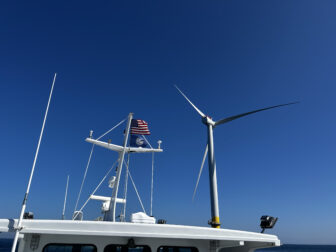The Huffington Post
by Caroline Selle
There was a time when “Stop the Keystone XL!” seemed like an unlikely rallying cry for the U.S. environmental movement. After all, plenty of pipelines receive permits every year without much outrage, so why would TransCanada’s request be any different? Plus, the fuel was coming from Canada, the country’s friendly northern neighbor. What could be the downside?
Plenty, according to environmental advocates. From the First Nations people who live near extraction sites in Canada, to Nebraskan farmers and ranchers concerned about the pipeline crossing a major aquifer, to families who live in Texas neighborhoods polluted by refineries, lots of people have a stake in the fight. And for climate activists, the pipeline is a test of the Obama administration’s seriousness about cutting greenhouse gas emissions and ending reliance on fossil fuels. The pipeline quickly became a symbol of resistance and the center of the fight over climate policy.
If the Keystone XL is approved (an answer is expected as soon as late May), what will the U.S. environmental movement rally around next? The power plant rules that the Environmental Protection Agency is working on will be an important step in reducing greenhouse gas emissions, but there’s no clear “ask,” as organizers like to say, other than “please finalize them.”
Enter the Cove Point liquefied natural gas (LNG) terminal. Located in Lusby, Md., Cove Point sits on the western shore of the Chesapeake Bay, only a 90-minute drive from Washington, D.C. Local environmental groups want to make Cove Point the next Keystone XL when it comes to organizing opposition.
The current facility was built in the 1970s for importing natural gas. Now, Dominion Energy is seeking permission to build a natural gas export facility on the same land, at a cost of as much as $3.8 billion. The project includes an on-site 130 megawatt power plant, a 60-foot-tall permanent sound wall, and storage units.
The approval process for any exportation facility is lengthy. Permits and approvals are required at the federal, state and local levels. Dominion is partway through the process: On September 11, 2013, the U.S. Department of Energy granted conditional approval to Dominion Energy to export approximately 770 million cubic feet of natural gas per day from Cove Point.
Before construction can begin, however, Dominion needs approval from the Federal Energy Regulatory Commission (FERC) for expansion of the Cove Point facility. FERC is currently conducting an environmental assessment and, according to Dominion Energy’s own documents, a response is expected in the first half of 2014.
The Chesapeake Climate Action Network (CCAN), a grassroots environmental group based in Takoma Park, Md., has made stopping Cove Point one of its central campaigns for 2014. And they’ve got the support of Bill McKibben, whose group 350.org led the anti-Keystone campaign.
Many cite 350.org’s work on Keystone XL as crucial to mobilizing so much opposition to the pipeline. In late August and early September 2011, the group led a sit-in that resulted in the arrests of 1,252 people in front of the White House. They were also a major player in recruiting 10,000 people to form a ring around the White House at a protest in November 2011, and helped organize the massive Forward on Climate rally held on in Washington in February 2012.
The group is also a leader in the nationwide campaign to get colleges and universities to stop investing in fossil fuels, an effort that has recently expanded to foundations.
350.org’s involvement in the Cove Point activism could help make the natural gas export facility a much bigger deal.
McKibben has already drawn a comparison between Cove Point and Keystone. “[L]ike the Keystone XL pipeline for tar sands oil and the proposed export of dirty-burning coal through new terminals in the Pacific Northwest, this liquefied gas plan is bad in almost every way,” he wrote with Mike Tidwell, CCAN’s executive director, in an op-ed published in Politico last month.
Tidwell wants to make Cove Point a sequel to Keystone. “I think that the battle over natural gas is joining the high profile fossil fuel resistance that you’re seeing across the country,” he said.
Here’s how the two fossil fuel projects compare:
1. They’re both export facilities.
At least some of the oil traveling through the Keystone XL pipeline will will likely be shipped overseas. Opponents of the pipeline say the export plans undermine industry claims that the pipeline will help move the United States toward energy independence. But there’s no question about that when it comes to Cove Point. Dominion Energy has already signed contracts with India and Japan to export natural gas from the terminal.
2. There are safety concerns related to both projects.
The concerns regarding the Keystone XL’s safety are well documented, with the potential for spills cited most frequently. Cove Point will be linked to a network of pipelines, and the facility will be used for cooling and pressurizing natural gas that will then be loaded onto tankers and shipped out to sea. Among other concerns, list of controversies surrounding the Keystone XL review process, including an initial environmental impact statement that President Obama sent back back for further review. Environmental groups have complained that the contractor that authored the most recent environmental impact analysis has ties to TransCanada that should have precluded it from working on the Keystone report, and that the analysis downplays environmental concerns.
When it comes to Cove Point, FERC is conducting an environmental assessment instead of a more detailed environmental impact statement (EIS). The federal regulatory agency is not required to conduct an EIS if a facility is only making minor modifications. But environmental groups say that the modifications Dominion is proposing are far from minor and that FERC’s plan is “misguided and absurd.”
In May 2013, Maryland Gov. Martin O’Malley (D) signed a law giving Calvert County the authority to grant a tax break to Dominion. In November 2013, the Board of County Commissioners voted to approve a five-year Payment in Lieu of Taxes (PILOT) agreement for Dominion Energy. After completing the PILOT, Dominion, “will receive 42 percent relief on real and personal property taxes for nine years,” according to a press release from the Calvert County Department of Economic Development. County commissioners want to promote the expansion of the LNG facility, which they say will create jobs and boost the local economy. However, many local residents are not happy about the tax break, which they say will essentially subsidize the pollution of their community.
One county commissioner has already suggested she’s not interested in hearing from anyone opposed to expanding the LNG facility. Before a hearing on whether to exempt the proposed facility from zoning regulations, County Commissioner Susan E. Shaw posted on Facebook discouraging community attendance. “It is a waste of time to come to the zoning hearing if you have concerns about the Dominion Cove Point Project,” she wrote. “FERC hearings will be held later. Of course, if you want to waste your time, feel free.”
3. Both projects open up new channels for the fossil fuel industry.
If the Keystone XL pipeline is constructed, it will allow the oil industry to ramp up production of the Athabasca oil sands in Alberta, Canada. If approved, the Keystone XL would enable the shipment of 830,000 barrels of oil per day from the tar sands.
Cove Point would similarly provide a new outlet for natural gas. According to a press release from Dominion Energy, Cove Point “will be a premier facility in terms of direct access to the Marcellus and Utica shale plays, two of the most prolific natural gas basins in North America.” Production from shale regions of the U.S. has been growing rapidly, with Marcellus production hitting 12 billion cubic feet per day in November 2013.
According to a press release from the Sierra Club at the time of Cove Point got conditional approval from the U.S. Department of Energy, “Exporting LNG to foreign buyers will lock us into decades-long contracts, which in turn will lead to more drilling–and that means more fracking, more air and water pollution, and more climate-fueled weather disasters like record fires, droughts, and superstorms like last year’s Sandy.”
“If we’ve got LNG ports up and down the Atlantic seaboard, then we will just never stop fracking the Appalachians — and that carbon and methane need to stay underground if we are to have a prayer of fighting climate change,” said McKibben.
4. Both projects are expected to increase emissions.
In 2010, climate scientist James Hansen called the Keystone XL “game over for the climate,” primarily because its construction would allow for the extraction and combustion of the tar sands, which have a much larger carbon impact than conventional crude oil–as much as 17 percent higher emissions over its lifecycle.
In addition to opening up new outlets for the natural gas industry’s excess production, Cove Point is expected to produce as many greenhouse gas emissions as all of Maryland’s coal plants combined, according to an analysis by the Chesapeake Climate Action Network using information drawn from Dominion Energy’s own disclosures.
As McKibben and Tidwell wrote in their Politico op-ed, “Gas is cleaner only at the point of combustion. If you calculate the greenhouse gas pollution emitted at every stage of the production process— drilling, piping, compression—it’s essentially just coal by another name. Indeed, the methane (the key ingredient in natural gas) that constantly and inevitably leaks from wells and pipelines is 84 times more powerful at trapping heat in the atmosphere than CO2 over a 20-year period, according to the Intergovernmental Panel on Climate Change.”
Will it be approved?
One thing Cove Point doesn’t require — while Keystone does — is the approval of the Obama administration. Aside from FERC’s environmental assessment, Dominion Energy has to hold public hearings before Maryland’s Public Service Commission can allow it to move forward with construction. The last public hearing on the plant is scheduled for April 23. Dominion Energy says it expects that it will begin construction in the first half of 2014.
Cove Point’s opponents have put forward a plan for what they think should be built instead of a natural gas export terminal. CCAN is advocating for the state to ramp up its production of wind energy, rather than building the gas terminal. “The estimated potential for untapped wind and solar power within Maryland’s borders is equivalent to ten times the total electricity Marylanders consume today,” the group says.
But will Cove Point generate the kind of attention that Keystone XL has? “I do think [Cove Point] is becoming another rallying point for the U.S. environmental movement,” said Tidwell. “We’re in the early stages. People are just starting to figure out how bad this is and it takes a while for people to understand the facts.”
“It’s starting to move toward the center of Maryland politics,” said Tidwell, adding that CCAN has “some creative actions” planned to push it there. “Our goal is that it moves to the center of regional environmental politics and then gets the attention that would be similar to tar sands.”






